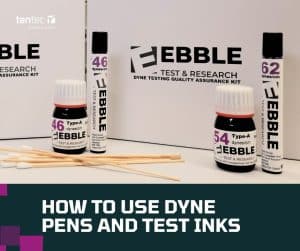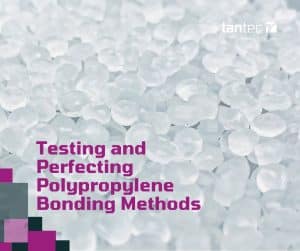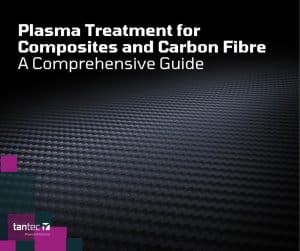
How to use Dyne Pens and Test Inks
Read this to find out the official way to get

Printing on to foam boards or solid sheets is commonplace for signs, building supplies and general manufacturing around the UK and Ireland. Here at Tantec UK & Ireland take a look at how Corona is effective in the treatment of foam and boards.
These boards are often made from PVC, polyurethane or other polymers that have a naturally higher surface energy than others. This allows them to be printed with the right inks, or stuck with the right labels or laminates.
Working with new materials, or with new inks, labels or coatings can create problems. These alternative materials may give superior finishes, stronger products or cheaper products to produce, but adhesion is severely less than traditional board or foam materials and this has often been the reason to avoid cheaper materials like PP sheets.
Other flat materials, including metal and glass sheets can have similar problems. Bonding to both of these materials is often sensible if they’re clean, abraded or precoated with a primer, but direct adhesion can be difficult.
The non-stick nature of some materials is often a desirable feature, it can mean the final product is easier to clean, or additives added designed to improve UV stability or other positive features might also impact non-stick features to the material.
Whether you want to improve performance of a small area, or the entire board. Or whether you want to try new materials, printing techniques or coatings. Corona treatment (and sometimes plasma) are on hand to help.
Treating a material with corona treatment is used to improve a surface so it’s more receptive to processing, improving adhesion and creating a durable and better product especially foam and boards.
Surface treatment using this technology can give several benefits:
Several projects worked on by Tantec have seen customers choosing a material and process for good reason. One such problem was a non-stick, easy to clean substrate made from Polypropylene. Introducing fixings was a problem because it meant there was a leak path for liquids to get through.
Treating one side of the part to enable bonding was ideal because it ensured that the part remained generally non-stick, but where it was necessary, it bonded extremely well.
Corona treatment is a controlled high voltage discharge, usually many thousands of volts. This discharge jumps across an air gap from a high voltage electrode to ground. As the spark jumps across the gap, which it does many thousands of times a second, it creates a sheath of plasma around each spark.
This sheath of plasma contains energetic particles that bombard your material surface. Firstly obliterating and removing oils and greases to give a perfectly clean surface, followed by the same molecules adding themselves to the surface. This new chemistry is enough to increase the surface energy. It also gives the right finish to accept inks and adhesives strongly and permanently.
As a bi-product, the technology creates ozone. This is easily extracted and filtered back to normal air. The filtration system usually acts to cool the system too, giving a more robust and stable process; especially true for higher powered and faster systems.
This process can be used for most materials, but especially metals, plastics and glass. With metals and glass, the key is in the cleaning step as both of these materials are actually really good to bond to… if you can get to the super clean surface! Plastics are often non-stick, and that’s true whether they’re clean or dirty, so adding the new chemistry really helps.
Tantec corona systems come in a variety of shapes and sizes. FoamTEC and SheetTEC cover a range of designs from small benchtop systems for treating A4, 10 micron thick sheets, to heavy industrial systems for treating relatively high speed 2m wide, 50mm thick continuous extruded materials.
SheetTEC covers solid materials, both conductive and nonconductive for treatment of specific areas or full width on single or double sided sheets. These systems can be stand alone, fed in and out by operators, semi automatic with the help of conveyors or tables. They can also be fully integrated and sit just after an extrusion line.
The design and idea for SheetTEC is often standard, but the size, thickness, treatment speed and integration considerations often mean that there’s at least some element of customisation to each machine.
FoamTEC is very similar, but its trick is that it can treat delicate materials like foams, fabrics or other materials that aren’t necessarily homogeneous across the part. When foam is passed through a standard corona treatment unit, the power will seek out the thinner areas and create pinholes, which can ruin the material. FoamTEC will treat any material gently and without causing damage.
A cross between the two, systems for treating corrugated boards limit the treatment inside the cavities to avoid loss of power and creation of ozone. Treating using a Tantec system will result in no ozone or problematic health and safety issues when treating these materials.
Advantages of FoamTEC and SheetTEC
• can treat thick materials, typically up to 50mm
• can handle material widths up to 3 metre, with capability to treat single or dual sides
• provides adequate treatment power to keep pace with faster extrusion lines
• fits any production line, due to unlimited customisation level
• long life of support roller and electrodes – not considered consumables
• treatment over the edges to minimise waste material – no edge trimming required
• no pin-holes when treating foams
• eliminates health issues – no ozone is created inside hollow or corrugated channels
• treatment of individual or continuous sheets is possible
Plasma, in either atmospheric nozzle form or vacuum form are very good at treatment of sheets. For smaller applications such as A4 sheets, or for specific area treatment. Both of these systems might be more cost effective or easier to integrate into a production line.
PlasmaTEC-X and SpotTEC systems are nozzle devices that can treat between 10mm and 150mm. Especially for production lines using robotics, these systems drop in quickly and easily with minimal tooling. You may be looking to simply print a logo on a small area. Treating an 8×4 sheet fully when you only need a 10cm square might not be the way to go whereas using a nozzle might be very sensible.
VacuTEC vacuum plasma systems can treat all over without the need for carrier systems or handling issues. Especially for those looking for flexibility and all over treatment, vacuum plasma is by far the most versatile. Larger vacuum plasma systems are costly, and when looking at treating multiple sheets quickly. It would be a slower technique than a SheetTEC.
The other key consideration, especially when looking at sheets for industries such as flexible printed circuit boards, is the use of high voltage. This is particularly important in projects where the part has conductive and non-conductive areas. The corona discharge may attract to the conductive areas, resulting in uneven treatment on the non-conductive areas. However, smart machine design can sometimes overcome this issue. However we do offer lab and onsite trials to be sure on this point.
Tantec UK and Ireland can support projects from our Worcestershire factory, including lab and production support and onsite trials. Ebble Manufacturing, the sub contract manufacturing arm of Tantec can also treat parts on an ongoing basis.

Read this to find out the official way to get

Polypropylene (PP) bonding is traditionally a difficult task due to

Composites are becoming increasingly important in manufacturing, whether these are
40A Crossgate Road
Park Farm Industrial Estate
Redditch
B98 7SN
Tel: 01527 304 004
Email: info@tantec-uk.com
